How to make high-quality maize silage
Our experts at Volac – the maker of the Ecosyl range of silage additives (including Ecocool) – have put together this step-by-step guide. It explains how to create high-quality nutritious maize silage, how and when to harvest, how to store it and what silage additives are recommended for optimal outcomes.
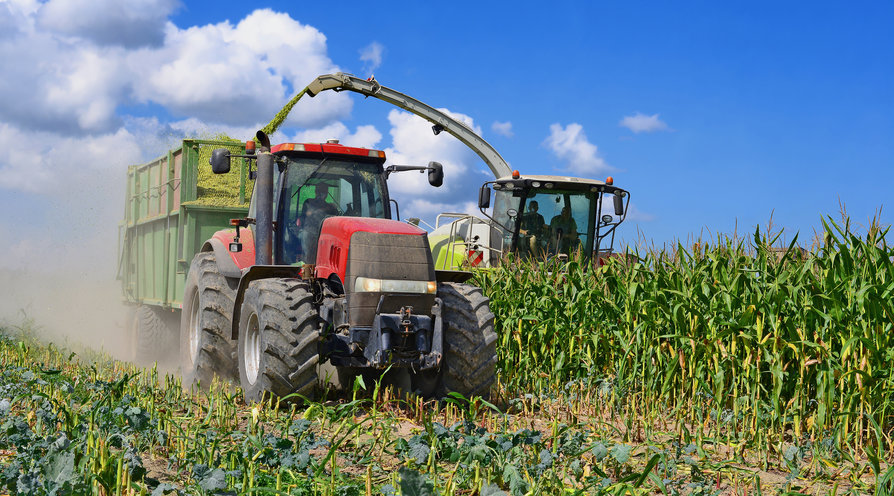
What is maize silage?
Just like grass silage, maize silage is created by fermenting (or ‘pickling’) the original crop as a way of efficiently preserving its dry matter and nutrients.
Maize silage is made out of whole ensiled maize plants. Although essentially a tropical plant, breeders have developed earlier-maturing varieties, enabling northern areas to grow maize successfully.
Is maize silage the same as corn silage?
Yes, to put it simply maize and corn refer to the same plant with the Latin name Zea mays for all you scholars. The word corn usually brings up images in people’s minds of juicy yellow kernels either still attached to the cob or sprinkled over a dish. Maize on the other hand feels distinctly more agricultural and typically refers to the crop still growing in the field.
What are the benefits of maize silage?
With its high starch content, maize is an ideal source of homegrown metabolisable energy for all classes of ruminants including dairy cattle, beef cattle, sheep, pigs and goats – helping to reduce the amount of energy required from bought-in concentrates. But maize is also one of the riskiest forages to preserve.
Per tonne, maize silage is generally nutritionally more valuable than grass silage – with enough energy in one hectare of fresh forage maize to theoretically support about 30,000 litres of milk production, assuming animal maintenance needs have already been met.
Why ensile maize?
Advantages of maize silage
- High % dry matter (DM) and energy contents
- Potential to increase DM intake, milk yield and milk protein in dairy cows
- One harvest per year
- Direct cut, no wilting
- Compliments grass silage
Disadvantages of maize silage
- Not suitable for wet or cold regions
- Low protein
- High dry matter and starch levels make it prone to aerobic spoilage
- Variable quality – weather dependent
- Low in calcium, phosphorous and sodium
However, you only have one chance to harvest and conserve maize correctly, so it is worth putting the effort into getting it right.
Actions taken during harvest and ensiling can have long-term consequences for how well the resulting maize silage keeps through the winter, how well it feeds, and how much is lost.
Dry matter losses in maize silage
Although maize silage is highly nutritious, it is very prone to losses – both during storage in the clamp and when fed out – due to the action of undesirable microbes (bacteria, yeasts and moulds) that ‘feed’ on it.
Typical maize clamp losses equate to about one 1 in every 10 trailer loads of dry matter ensiled being lost. However, they can easily be higher, for example, 2 out of every 10 trailer loads if clamp management is poorer. If spoilage in the more vulnerable parts of the clamp occurs – such as the top and shoulders – half the dry matter or more in these areas can go to waste.
Additionally, it isn’t just the least nutritious parts of the dry matter that are lost – such as fibre. It is the most digestible parts – the sugars and starches – which the undesirable microbes use up first. So, not only is there less dry matter available to feed, but the dry matter remaining contains less energy for the cow.
Certain undesirable microbes can also lead to reduced silage palatability, resulting in animals eating less of it, which also pushes up bought-in feed requirements, while mould growing in the silage can also cause mycotoxins.
All these make it important to pay close attention to crop and clamp management and additive choice with maize.
What causes dry matter losses in maize silage?
One source of loss that maize silage is known for occurs when it heats up (in the process of aerobic spoilage). This is caused by yeasts and moulds ‘feeding’ on the silage in the presence of air.
However, it is not just losses from heating that maize suffers from. Invisible losses from poor quality fermentations can account for as much as half the overall dry matter losses.
What is aerobic spoilage (heating)?
Aerobic spoilage is often wrongly referred to as secondary fermentation. However, it is not part of the fermentation process as it only occurs in the presence of air, while fermentation, by definition, occurs only in the absence of air. It is initiated mainly by yeasts which can grow using a variety of different substances particularly residual sugars and lactic acid. They convert these to carbon dioxide and water – producing a significant amount of heat and high dry matter losses in the process. After the initial yeast activity, moulds join in. They are able to grow on a wider range of substances so spoilage accelerates. Such silages will also have reduced palatability.
- Exposure to air (most important) – affected by:
- Crop dry matter
- Speed of clamp filling
- Compaction
- Effective sealing
- Feed-out rate and technique
- Quality of fermentation
- Ambient temperature
Types of silage most susceptible to aerobic spoilage
- High dry matter silages
- Silages with high residual sugars
- Silages fed in warm weather
- Aerated silages – e.g. mixed in TMR
- Silages with high numbers of lactate assimilating yeasts at opening
How do losses in maize silage start?
A key challenge is that maize plants can play host to a lot of undesirable microorganisms – bacteria, yeasts and moulds – for example on dying leaves and rotting tassels that collect in leaf joints.
If these microbes are allowed to multiply in the clamp they not only feed on nutrients, they also interfere with preservation.
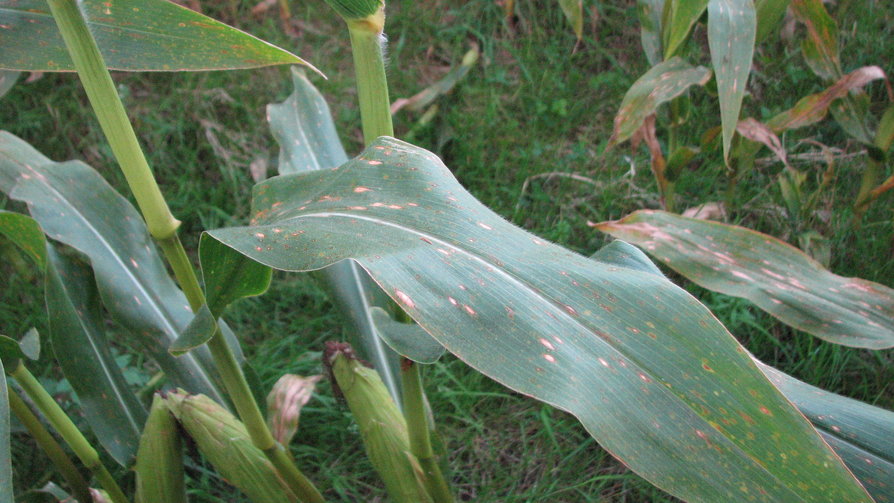
Dying leaf material provides a home for undesirable microbes that can interfere with maize preservation
How to reduce dry matter losses in maize silage
Preserving maize silage is not a single-step process. It requires a joined-up approach (see table). This starts before harvest and doesn’t end until you can see the silage at feed-out is staying cool.
Fundamentally, there are two key principles.
- Minimise the number of undesirable bacteria, yeasts and moulds that get into the clamp in the first place
- Inhibit the growth of any that do
Certain steps that help to produce nutritious maize silage – such as harvesting at the optimum % dry matter (DM) content – can also aid conservation. Similarly, steps such as achieving a good consolidation can benefit not only the fermentation but also help to reduce losses from aerobic spoilage (heating).
Six top tips for producing better maize silage
Tip |
Why do this? |
|
Clean the clamp before harvest |
To remove undesirable bacteria, yeasts and moulds surviving on old silage and in cracks |
|
Harvest maize promptly at 30-33% dry matter (DM) |
To provide a balance of:
|
|
Leave at least 15cm of maize stubble |
Because the stem base is:
|
|
Chop to the optimum length (e.g. 1.5-2.0cm) |
So the maize is:
|
|
Treat with a dual-acting additive |
|
|
Fill the clamp in maximum 15cm layers, roll with sufficient weight and sheet thoroughly (side sheets, an O2 barrier film & well-weighted top sheet) |
(Typically, maize at 30% DM requires 25% of its weight arriving at the clamp/hour to consolidate it. So 100 tonnes/hour requires 25 tonnes rolling constantly) |
How to prepare maize clamps for harvest
To begin, ensure the clamp is thoroughly clean. Discard old silage that can harbour mould spores, and pressure wash the walls and floor.
Similarly, ensure the area in front of the clamp is clean, so that machines are not introducing soil contamination or old silage via their tyres.
Before harvest, line clamp walls with polythene, which is a better barrier against oxygen than bare concrete. This is important because airtight conditions both aid fermentation and reduce yeast and mould activity in the clamp.
Other steps ahead of harvest include ensuring you have enough of the correct type of silage additive ordered or in stock to treat the entire clamp, so that the vulnerable top of the clamp is not left untreated because you run out. Use a dual-acting additive designed to both improve fermentation and inhibit yeasts and moulds.
When should you harvest maize for silage?
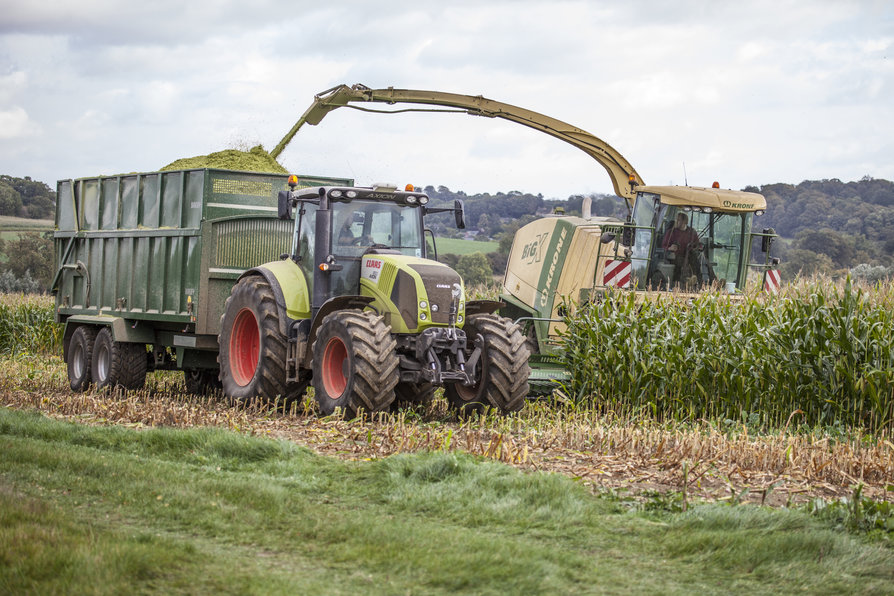
Maize is often regarded as only ready to harvest once it dies back. However the optimum is as soon as it reaches 30-33% dry matter (DM) content. Modern maize varieties tend to reach this while still green. So monitor % dry matter regularly on the approach to harvest. This way, you can keep your contractor informed so you can get them on-farm at the ideal time.
What happens if I harvest at the wrong time?
Harvest too early and the starch in the cobs will not be fully formed.
Harvest too late, when the crop is drier, and it becomes more difficult to consolidate and squeeze the air out of the clamp – leaving it exposed to yeast and mould growth and therefore at heightened risk from heating (aerobic spoilage). If the crop has started to die off (senesce) and turn brown at harvest, it will be particularly prone to mould growth and will become less digestible to the cow.
Also at harvest, leave at least 15cm of stubble. As well as being at risk of soil contamination, the stem base contains more mould spores and is low in nutritional value. And chop to the optimum length to aid consolidation, for example 1.5-2.0cm.
How to check maize is ready to harvest
To assess maize % dry matter (DM), collect at least 10 consecutive cobs along a row in a representative part of the field (avoid field edges) and press your thumbnail into the exposed kernels. When ready to cut, it should leave no indentation in kernels at the cob base, but show a soft cheese texture in the top kernels.
Additionally, break cobs in half. When ready to harvest, the visible milk line in kernels half way up the cob where milky white sugar changes to solid starch should be one-third to one-half yellow starch.
If growing ‘stay green’ varieties, remember that the cob may be ready for harvest even though the plant is still green. If you wait until the plant looks mature, it may be 40% DM and past its best.
Why a maize silage additive is important
With the drive to farm sustainably, minimising dry matter and nutrient losses and wastage when making maize silage is key.
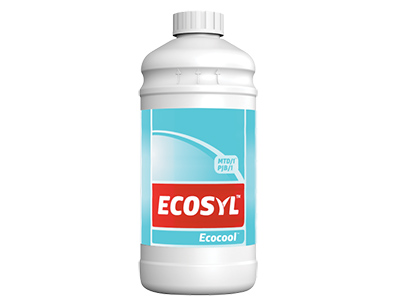
Often, a lot of attention is paid to growing a good maize crop – such as getting establishment right. So it’s important to pay similar attention to detail to protect that investment when it comes to harvesting and ensiling.
Compared to the value of maize, the cost of a proven additive is minimal, and choosing the correct type puts you in much better control of how well the silage turns out.
How a silage additive works in maize
The key to successful ensiling and fermentation is the rapid production of beneficial acid to create a stable pH and reduce the activity of spoilage organisms.
However, the fermentation (or ‘pickling’) must occur rapidly.
The beneficial bacterial strain Lactobacillus plantarum MTD/1 (as used in Ecosyl, where it has been shown to lead to animal performance improvements, and included in Ecocool – see below) produces desirable lactic acid, and has been specially selected for producing an efficient fermentation.
The crop can be ensiled without an additive, and indeed its high % dry matter and sugar contents, along with a low buffering capacity, mean maize can ferment well. However, a natural fermentation will be driven by whatever bacteria are present on the crop – both good and bad ones. Some of these may produce lactic acid. But some produce weaker acids and alcohols which allow undesirable microbes to continue using up silage nutrients for longer. They also produce carbon dioxide, which wastes the silage energy and dry matter.
By applying an additive that includes Lactobacillus plantarum MTD/1, maize is receiving a strain of bacteria that is highly efficient at lactic acid production. The benefits are faster inhibition of unwanted microbes and therefore potentially lower dry matter losses.
Maize heating (aerobic spoilage)
That said, this is only one half of maize preservation, because maize is also susceptible to aerobic spoilage (heating). During this process, certain yeasts are able to survive in acidic (low pH) conditions and, if air is present, will feed on lactic acid – both at feed-out and during storage if consolidation is poor. This further reduces dry matter and energy content through the production of carbon dioxide.
Worse still, this using up of lactic acid allows the pH to rise again, allowing other undesirable micro-organisms – such as Aspergillus and Penicillium – to grow. These further reduce the silage’s nutritional value and palatability, and can lead to mycotoxins.
As well as ensuring a good fermentation in maize, it is therefore vital to stop these yeasts.
What is the best way to innoculate maize with a silage additive?
We have developed a range of application devices to suit any need. Our Ecosyler Ultra Low Volume (ULV) system is developed especially for the application of Ecosyl 100 using self-propelled harvesters. Ecocool can also be applied in ULV down to 20 ml/t. The Ecobaler is ideal for balers, but can also be used with forage harvesters or forage wagons. We also have solutions for dry application and application from self-propelled or trailed harvesters and smaller drums and cans.
By applying the dual-acting additive Ecocool, it not only provides a tailored dose of Lactobacillus plantarum MTD/1 to support a rapid fermentation, but also a second beneficial bacterial strain, Lactobacillus buchneri PJB/1, which has been specially selected for inhibiting yeasts and moulds (see image).
Indeed, in trials, compared with untreated maize silage which contained 440 million colony forming yeast units per gram after exposure to air, maize silage made with Ecocool contained fewer than 1,000. Ecocool has also been shown to keep silage removed from the clamp cool and stable for more than 10 days.
When considering an additive, there is an argument that greener maize needs extra help with fermentation, while more mature, drier maize needs greater protection against losses from heating. A dual-acting additive covers both bases, giving flexibility in harvest date.
A key mistake to avoid is not mixing up a final batch of additive if the applicator runs out before harvest is complete. As with not ordering enough additive, this leaves the most vulnerable top of the clamp exposed.
Inhibition of yeasts with Ecocool
|
No additive |
With Ecocool |
|
|
Number of yeasts (colony forming units per gram of forage) |
||
|
After ensiling |
1,500,000 |
<1,000 |
|
After air exposure |
440,000,000 |
<1,000 |
How to design a maize clamp
Creating narrow clamps to minimise the size of the silage face exposed to air, and to allow faster progression back through the clamp at feed-out, is a key method for reducing air penetrating into the face and therefore for reducing losses from heating.
In addition, avoid south-facing clamps where the sun could heat up the open face.
With large clamps, where it takes a long time to cross the face at feed-out, and on farms where maize silage is fed during summer, there is a particularly strong case for using an appropriate additive.
How to achieve good silage compaction
Do not compromise clamp consolidation. It can be tempting if in a rush, but you could be living with the consequences of poor preservation from air in the clamp for a long time.
The aim of consolidation is to drive out as much air as possible which both reduces the ability of harmful microbes to propagate but also allows more silage to fit in the clamp, which is important because anything above the walls is difficult to roll.
Shorter chop lengths are useful to aid consolidation, especially if maize is dry. So consider chopping to 1.5-2.0cm or down to 1.2cm if needed. Also, fill clamps in horizontal layers (or at a maximum angle of 20 degrees to the horizontal) rather than in a wedge shape, which is more difficult to consolidate, and in layers at most 10-15cm deep to get maximum benefit from compaction machinery.
Maize should be compacted to a minimum density of 0.7 tonnes of fresh weight per cubic metre. Typically, maize at 30% dry matter (DM) requires 25% of its weight arriving at the clamp per hour to consolidate it. So, 100 tonnes per hour requires 25 tonnes, which means at least two machines rolling constantly.
Seven tips on how to seal a maize clamp
Once air has been squeezed out, keep it out by creating as much of an airtight ‘bag’ in the clamp as possible.
- Polythene side sheets should be used to line the walls down to the floor.
- Use an oxygen barrier film on top of the maize. These films are sucked down into surface the contours of the forage to help create a seal.
- Next, fold the side sheets over this, with a minimum 1-2 metre overlap on top of the film
- Use a single 1000-gauge or two 500-gauge polythene top sheets pulled tight over the top.
- Place a woven sheet over this to prevent damage, then weigh the sheet down to keep it in contact with the silage using mats, touching tyres or bales etc.
- Place gravel bags around the edges of the clamp to stop the sheet from flapping. Remember, clamp bases rarely suffer from heating and spoilage because of the weight of the silage above.
- Finally, cover with netting to stop birds pecking through the sheets and letting air in, and control rodents.
How to minimise maize losses at feed-out
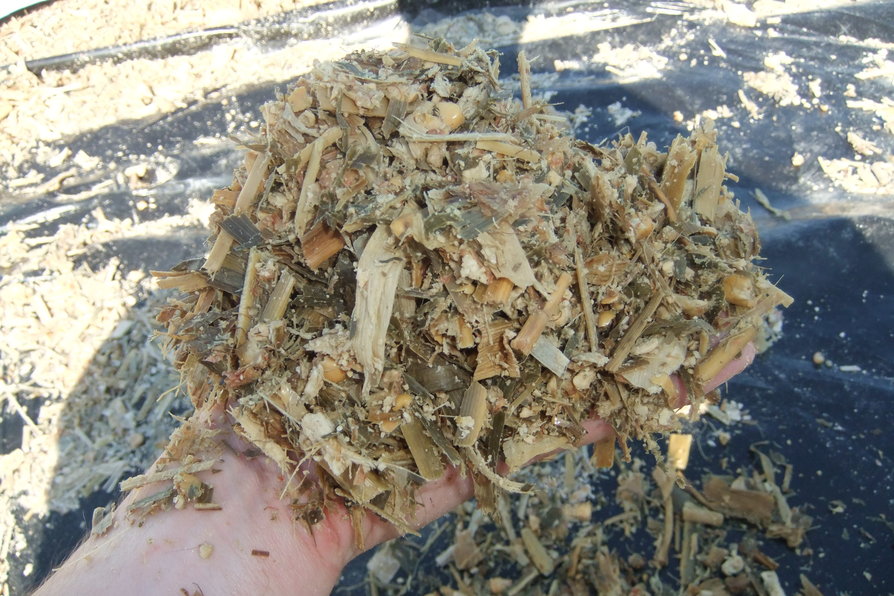
Having gone to the trouble of growing and conserving a good maize crop, don’t allow losses and wastage at feed-out.
Minimise air ingress of the open clamp by keeping the face smooth using a block cutter or shear grab and moving across the clamp quickly so that each newly-created face is exposed to air for the minimum time.
In addition, do not allow the top sheet to hang over the face as this creates a warm, humid environment that yeasts thrive in. And remove old silage that falls off the face promptly, to prevent it becoming a source of mould spores.